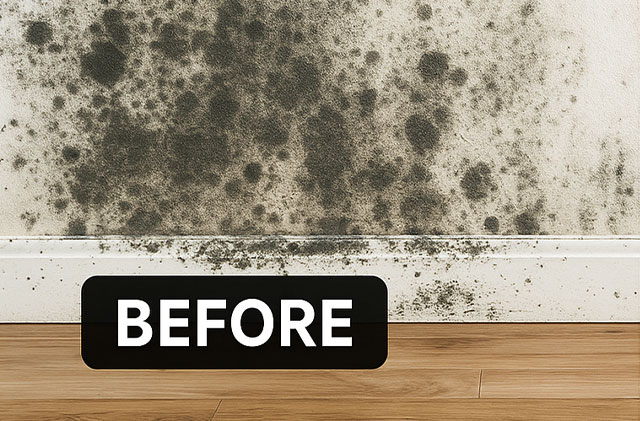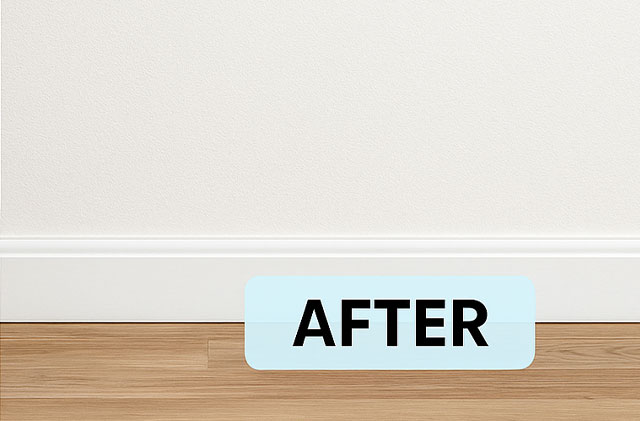Tags: allergy symptoms from mold, basement mold, DIY mold detection, mold in HVAC system, mold removal checklist, mold under flooring, Toronto mold cleanup, Water damage and mold,
For non-emergencies use our contact form
Emergency? 24-Hrs
416.800.0000
discover the most common signs of hidden mold before it spreads.
Mold isn’t always visible—but that doesn’t mean it’s not silently spreading behind your walls, under your floors, or inside your HVAC system. If you’ve ever wondered whether you have a mold problem without seeing the classic fuzzy black spots, you’re not alone. In this guide, we’ll uncover the 10 shocking signs of hidden mold in your home and what you can do about it—fast.
One of the most common and overlooked signs of hidden mold is a musty, earthy smell that lingers no matter how often you clean. This odor often originates from mold colonies growing behind drywall or under flooring.
Do your eyes itch, or does your nose run whenever you’re inside your house? Mold spores can trigger allergic reactions, even if you can’t see the mold itself. Sneezing, coughing, and respiratory irritation indoors could signal hidden mold growth.
Moisture trapped behind walls causes paint and wallpaper to bubble, peel, or warp. This is often a red flag indicating mold thriving behind the surface—especially in basements or bathrooms.
Dark stains or patches, especially those that grow over time, could be mold colonies. Even slight discoloration in drywall or ceiling tiles may suggest a serious mold issue behind the material.
Wood floors that buckle or laminate that separates may be due to moisture from mold infestation beneath the surface. Subfloor mold can grow silently while causing visible damage over time.
People with asthma may find their condition worsening indoors. This is because toxic mold spores and mycotoxins affect indoor air quality, making it harder to breathe.
When pipes show signs of rust or condensation indoors, it often indicates high humidity—an ideal environment for hidden mold to flourish behind walls or near plumbing systems.
Believe it or not, prolonged mold exposure can lead to headaches, brain fog, and chronic fatigue. Mold affects more than just the lungs—it can disrupt neurological function if left unaddressed.
If you spot mold on fabric furniture, HVAC vents, or carpets, chances are the real mold colony is hiding somewhere deeper in your home—especially in the air ducts or insulation.
Past flooding, leaks, or damp basements provide the perfect breeding ground for mold. Even if you repaired the visible damage, hidden mold could still be growing in wall cavities or behind tiles.


Use the slider to see how the wall looked before GTA Restoration M old Remediation work and after.
Ignoring these signs of hidden mold in your home won’t make the problem disappear. Mold not only damages your property—it poses serious health risks to your family. Detecting mold early is critical to avoiding costly remediation later.

Hidden mold often starts where moisture lingers—find out where.
If any of the above signs seem familiar, don’t wait. Mold can spread rapidly in as little as 24 to 48 hours. Whether it’s a lingering musty smell or sudden allergy symptoms, it’s time to act.
👉 Schedule a professional mold inspection
👉 Seal off affected areas to prevent spore spread
👉 Use a hygrometer to monitor home humidity
👉 Contact a certified mold remediation company
Professional flooded basement cleanup in Toronto, Mold Remediation in Toronto, Emergency Cleanup Water Damage, Emergency plumbing to prevent water leaks and mold,
Crime and Safety Recent Survey in Toronto and Canada, Sanitizing & Disinfection, Restoration Services, Montreal Biohazard Cleanup, The Process of Biohazard Cleanup and Remediation, Tags: allergy symptoms from mold, basement mold, DIY mold detection, mold in HVAC system, mold removal checklist, mold under flooring, Toronto mold cleanup, Water damage and mold,
For non-emergencies use our contact form
You’ve identified the symptoms—but what’s causing the mold in the first place? Hidden mold doesn’t grow out of nowhere. Here’s what fuels its growth and how to shut it down for good.
One of the top causes of mold is ongoing moisture from plumbing leaks or roof damage. Water dripping behind walls or into insulation creates a perfect environment for mold spores to thrive undetected.
Bathrooms, kitchens, and laundry rooms without proper airflow trap steam and humidity. Over time, that leads to condensation buildup, which mold absolutely loves.
Basements naturally have higher humidity and less sunlight. Combine that with concrete walls that trap moisture, and you have an ideal mold nursery—especially behind drywall.
If your home has ever flooded—even from a minor appliance leak—mold may have taken root in the subfloor, walls, or insulation. Mold only needs a few inches of standing water to begin growing.
Your HVAC system can spread spores throughout your home if it becomes contaminated. If mold is growing in air ducts or vents, you may be inhaling spores without even knowing it.
Use moisture meters and thermal imaging to locate damp areas behind walls or beneath flooring. Stopping the source of water is the first step to eliminating mold.
Install exhaust fans in moisture-prone rooms. Keep doors open when possible and use dehumidifiers to maintain indoor humidity levels below 50%.
Drywall, carpeting, and insulation with mold cannot be saved. These materials must be safely removed and replaced by mold remediation professionals.
After removal, all surrounding areas should be treated with antimicrobial solutions to kill remaining spores and prevent regrowth.
Sealing cracks, installing sump pumps, and applying waterproof membranes can stop mold at its root—moisture intrusion.
Nationwide, Local Pricing
GTA Restoration offers local flood & water damage repair, mold removal/remediation, asbestos removal/abatement, fire/smoke damage repair services and much more.
Search
Signs of Hidden Mold in Your Home Tips Mold is sneaky—but with the right knowledge and fast action, you can beat it before it causes lasting damage. The 10 signs of hidden mold in your home aren’t just cosmetic—they’re warnings your property and health are at risk. If you’ve noticed unusual odors, mysterious stains, or unexplained allergy symptoms, take them seriously. Every hour counts when it comes to hidden mold. Mold spreads quickly, damages your home, and compromises your air quality. DIY mold cleanup often misses spores hidden deep in walls or air ducts. Hiring a professional team ensures full containment, removal, and restoration—keeping your family safe and your home mold-free. 👉 Act now to schedule a mold inspection with a certified expert Protect your home, protect your family, and breathe easier knowing your space is mold-free. For professional help, contact GTA Restoration’s Mold Remediation Team—available 24/7 to assist homeowners in the Greater Toronto Area.Don’t Wait—Protect Your Home from Mold Today
Pro Tip: Hire a Certified Mold Remediation Company
👉 Take control of your home’s health before it’s too late
👉 Don’t wait for visible damage—find and stop mold fast
We Work Direct with All Insurance Companies
Wᴇ ᴀʀᴇ ᴄᴏᴍᴍɪᴛᴛᴇᴅ ᴏɴ ᴡᴏʀᴋɪɴɢ ᴡɪᴛʜ ᴇᴠᴇʀʏ ɪɴsᴜʀᴀɴᴄᴇ ᴄᴏᴍᴘᴀɴʏ ᴀᴄʀᴏss Cᴀɴᴀᴅᴀ & USA.
Learn more ↴
RELATED ARTICLES
Call Us 1.800.506.6048
Emergency? Immediate response 24/7
416.800.0000
We cover all GTA 24/7.
Head Office:
101 Lebovic Ave,
#10
Toronto, ON
M1L 0J2,
Open 24 hours
Downtown Office:
250 Yonge St,
#10
Toronto, ON
M5B 2L7,
Open 24 hours
For non-emergencies use our contact form
Not sure what you need?
Call us today to find the best product for your situation.
416-800-0000 416-800-0000
Head Office:
101 Lebovic Ave,
Unit #10
Scarborough,
ON, M1L 4T7 Hours24-Hours Open
Downtown Office:
250 Yonge Street,
Unit #1A
Toronto,
ON, M5B 2L7 Hours24-Hours Open
Signs of Hidden Mold in Your Home
Get a quote today